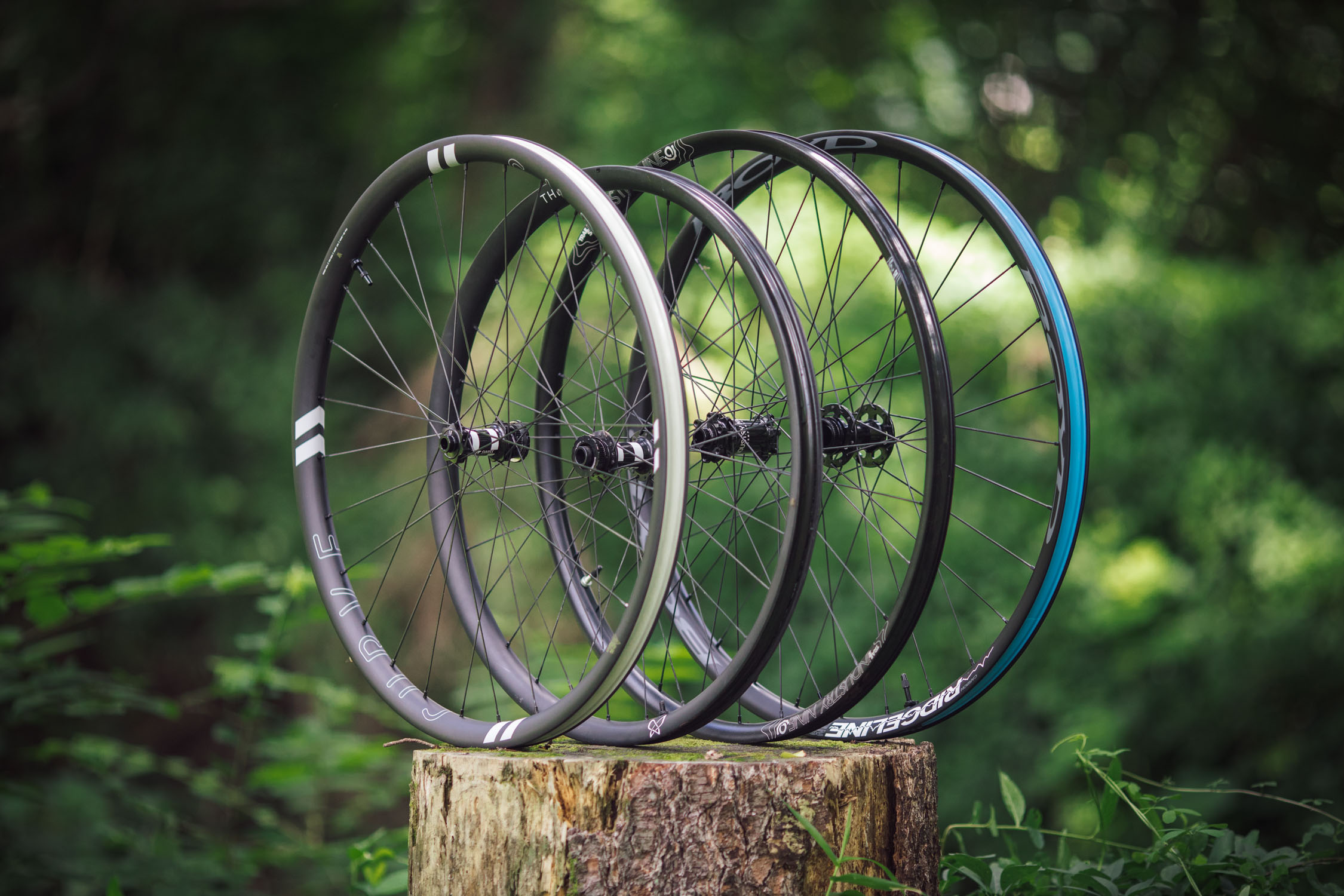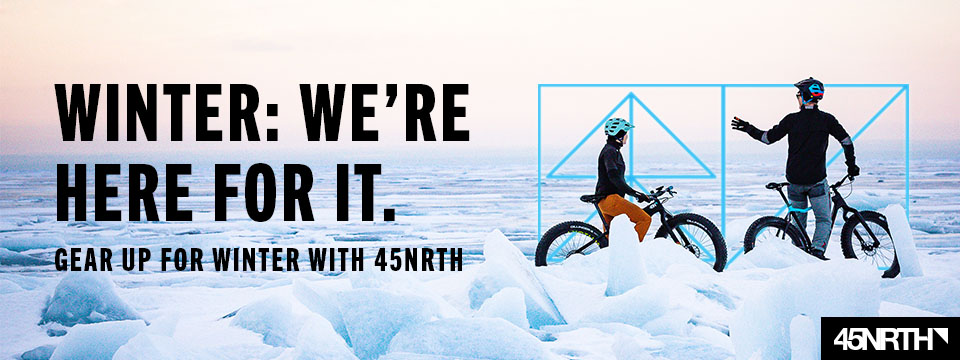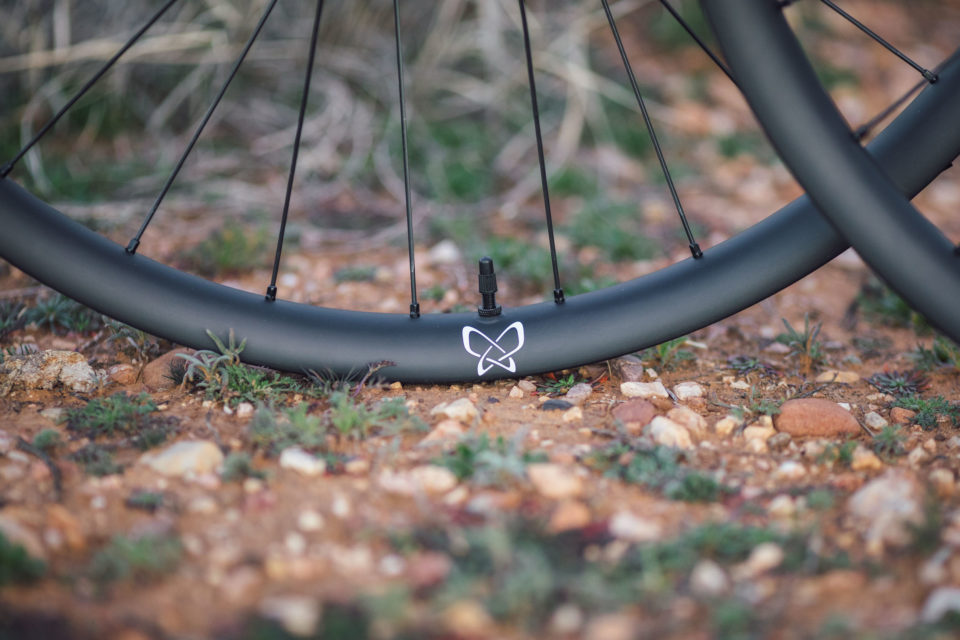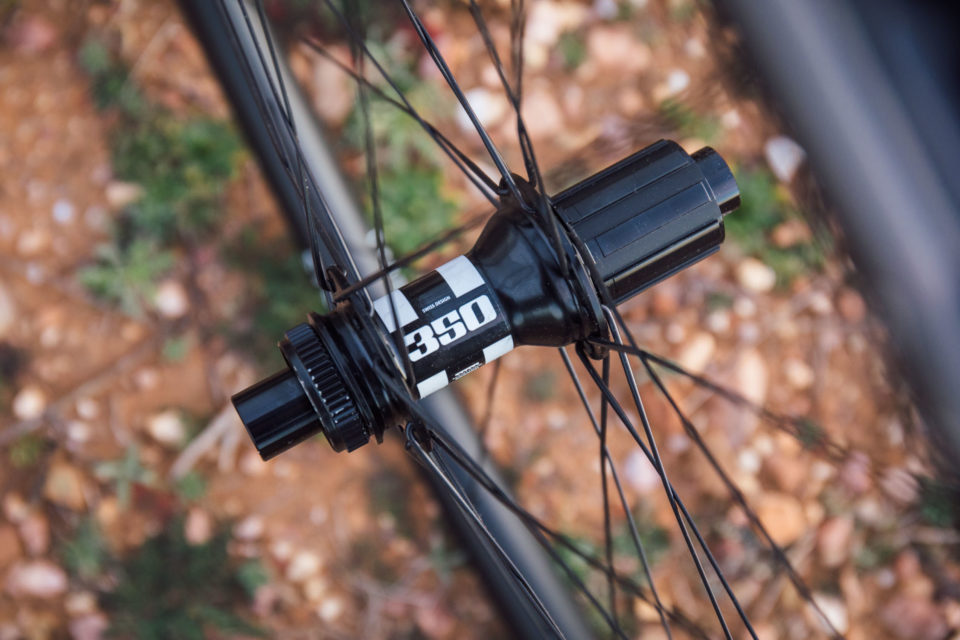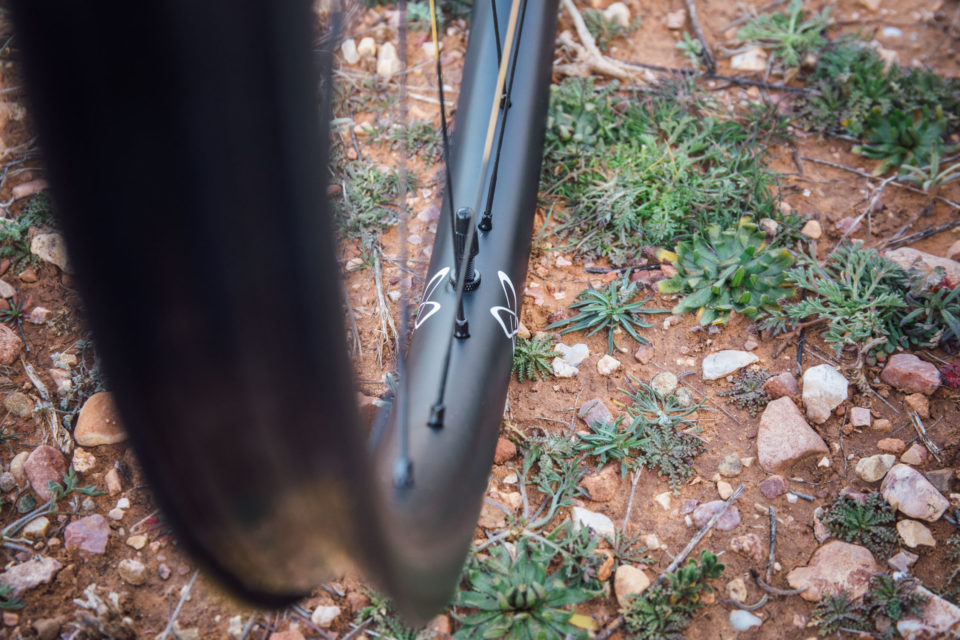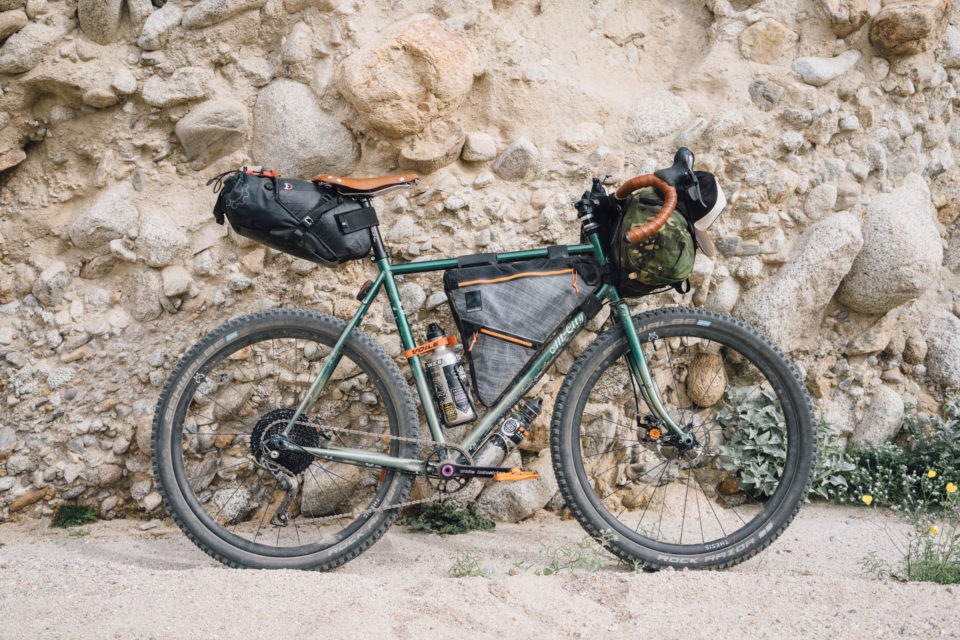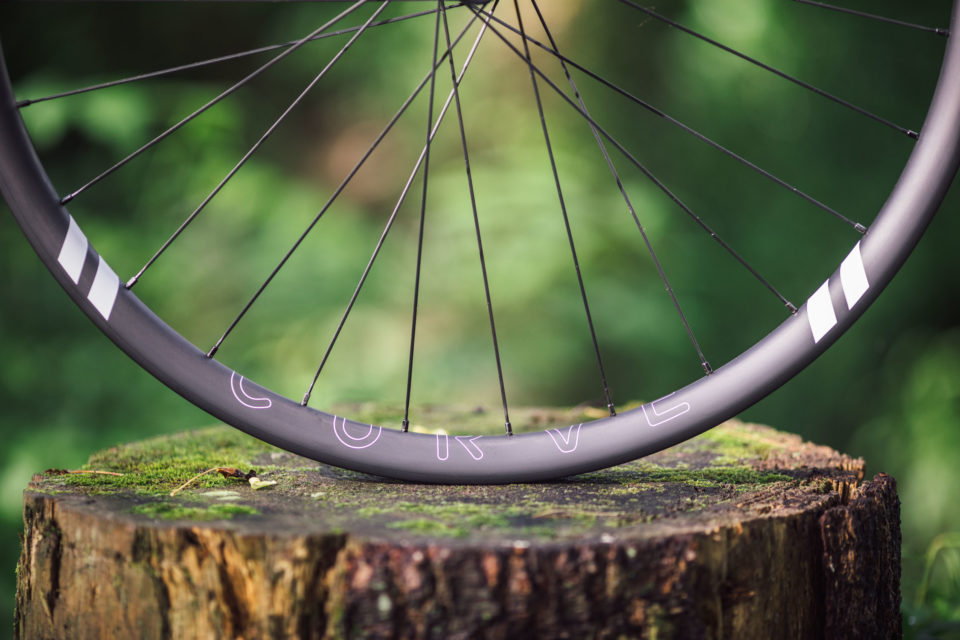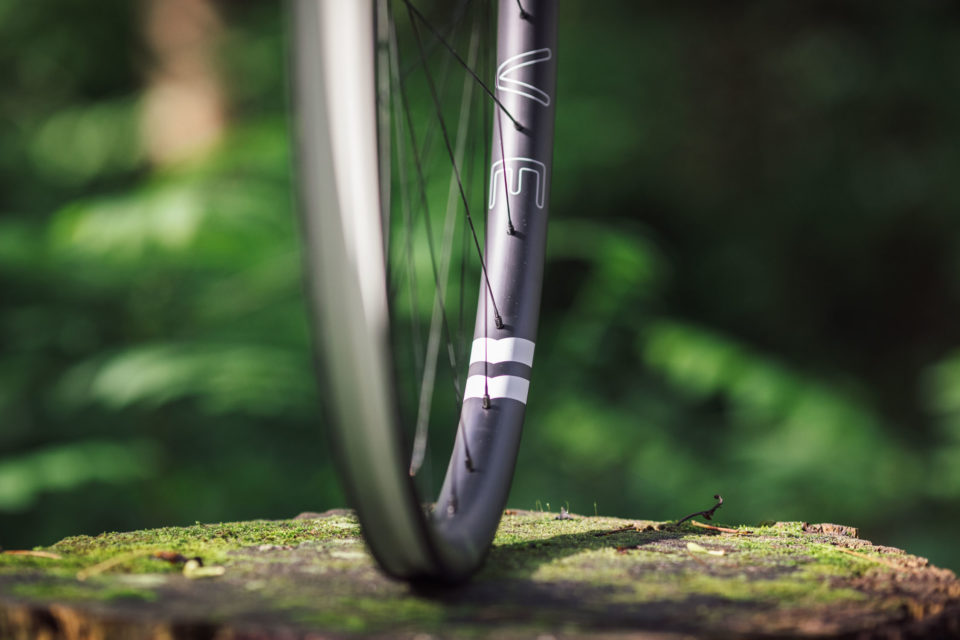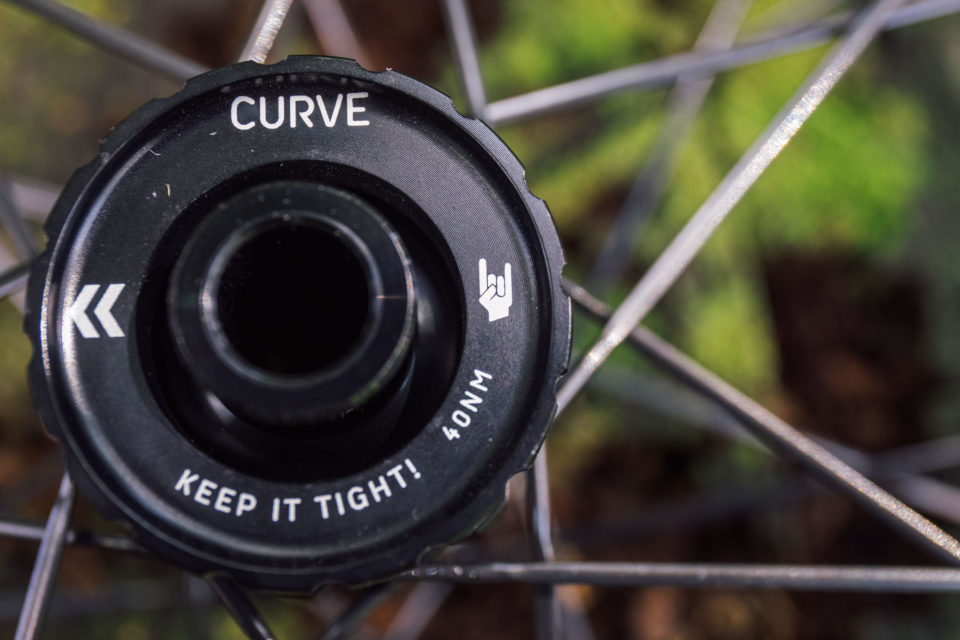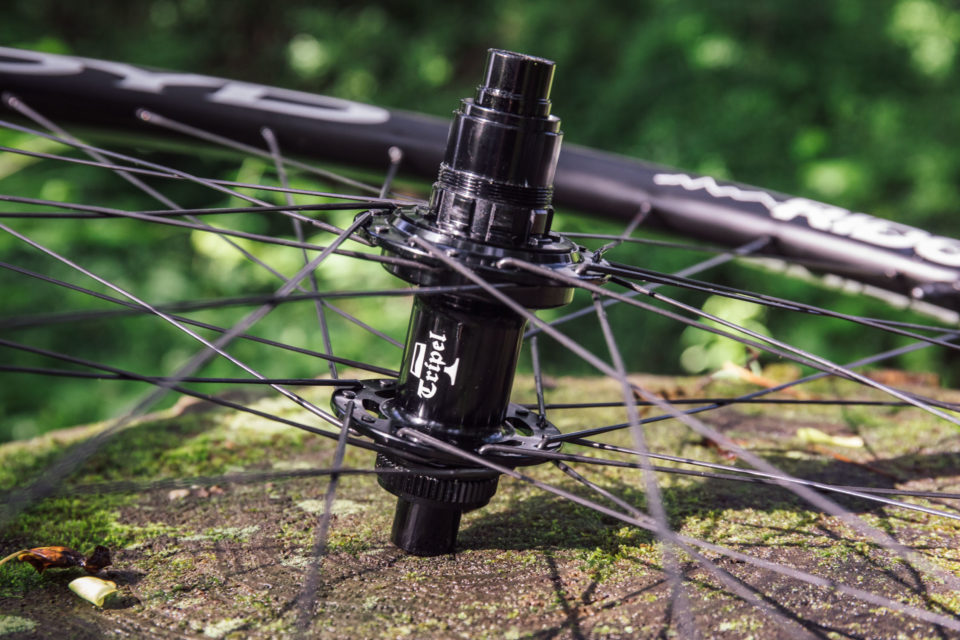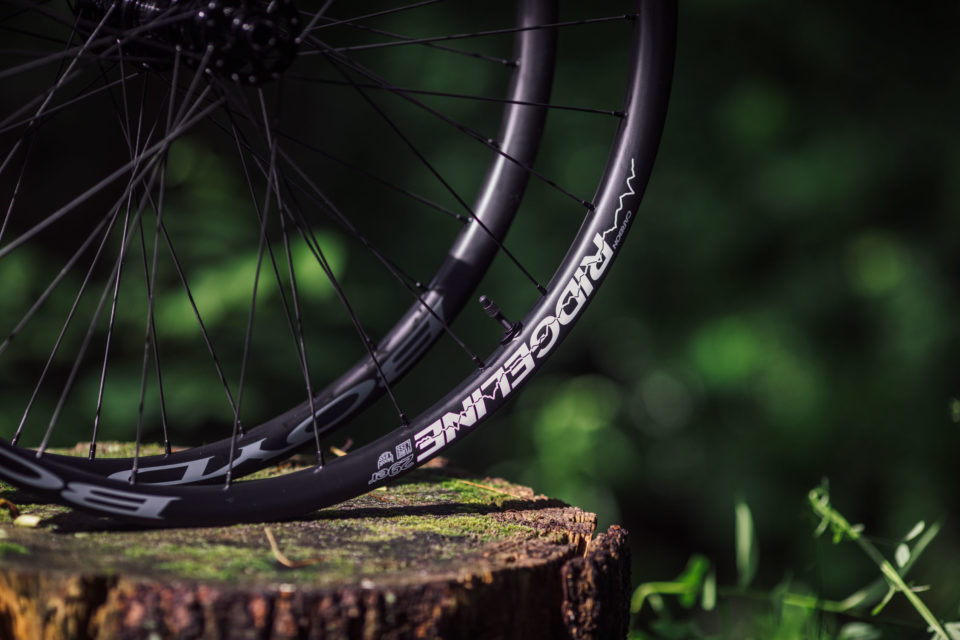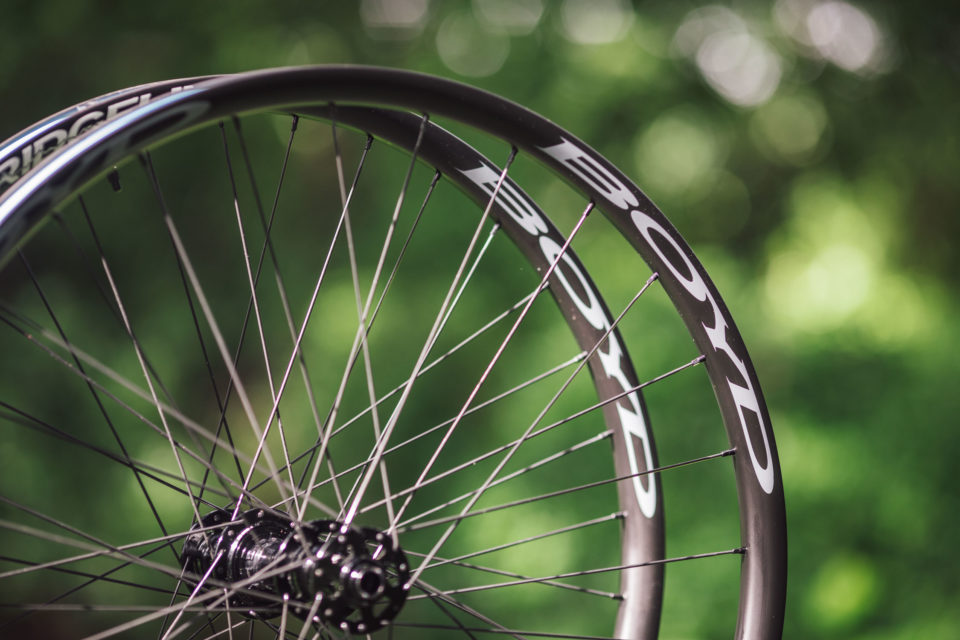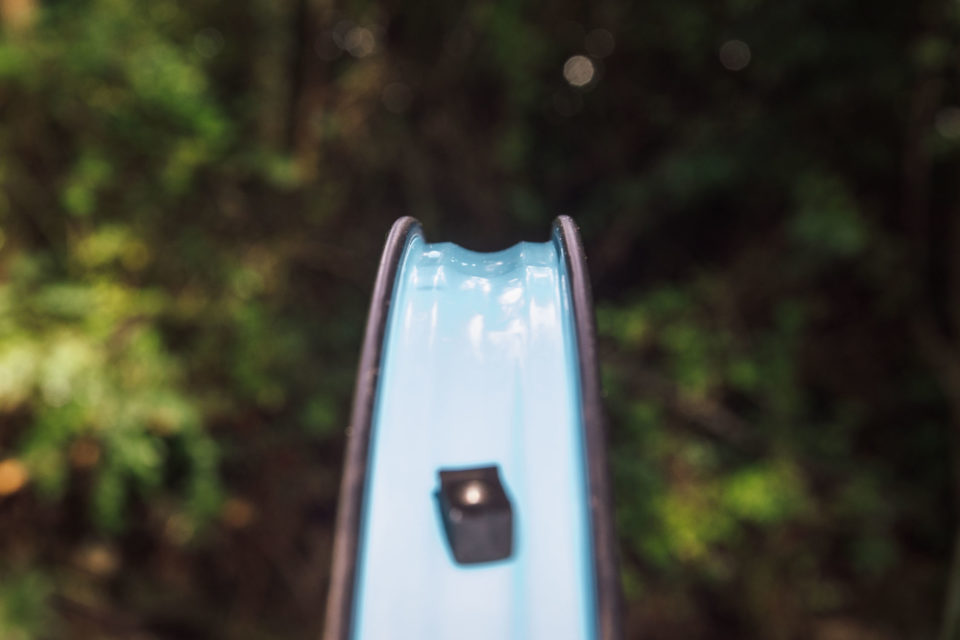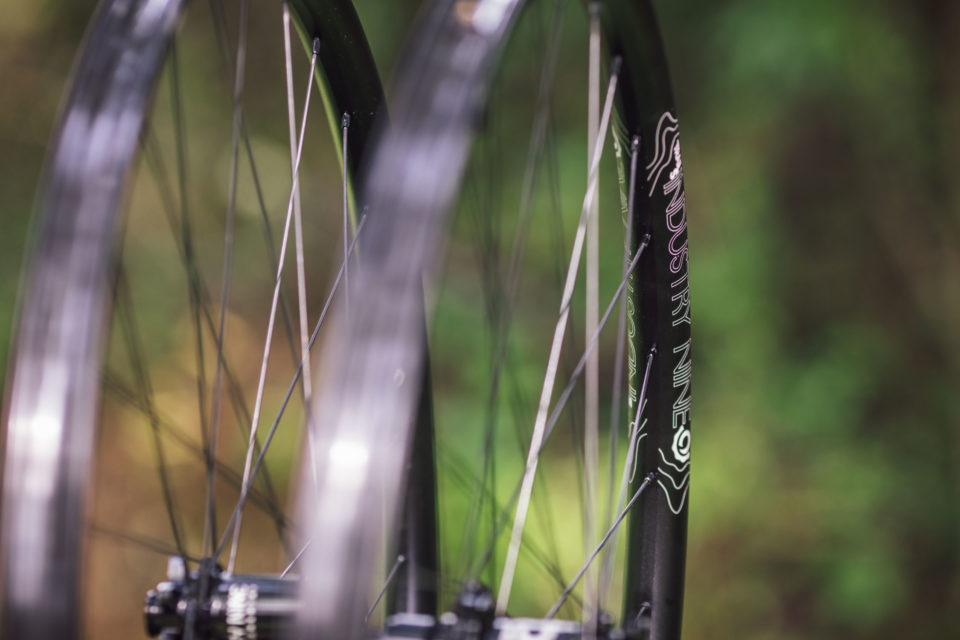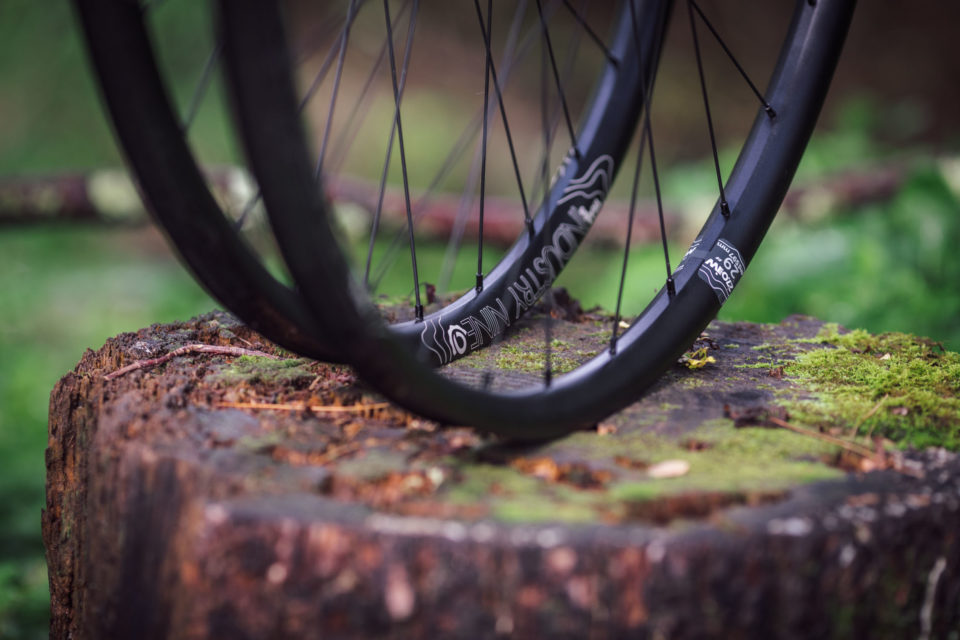Wide Gravel Wheels (and the Lack Thereof)
Looking for a good wheelset for your big-tire drop-bar bike? The truth is, wheel options with the proper specs can be hard to come by—wide rims fit for 47mm-2.1” tires, 12mm gravel axle standards, and a spoke count suitable for a bikepacking load. See what options are available, plus our suggested “proper” tire/rim width ratio, and first looks at four wheelsets we like…
PUBLISHED Jul 23, 2019
It’s no secret that bike rims have been getting wider across many popular segments, particularly MTB and gravel. This is no doubt owed to a few reciprocal trends: the popularity of plus tires, the rise of 650B “road plus” rubber (47-50mm), and the mass adoption of tubeless technology, which enables lower tire pressures and encourages more voluminous rubber. Fortunately, the result of all of these shifts is a wider understanding (no pun intended) of the importance of matching the proper rim width to particular tire sizes.
It’s also becoming common practice for rim and wheel manufacturers to reference rims’ internal width (IW)—the internal measurement between the rim beads—instead of the rather useless external rim width metric. In our opinion, all of this is moving in the right direction. Correctly proportioned mountain bike rims and wheels have pretty much arrived, with a good selection of rims in the 30-32mm IW range, well suited for 2.25-2.6” tires, and a fair amount of 35-36mm IW rims for 2.6-2.8” tires. And, larger 40mm+ rim widths for full-on 3.0” plus tires.
Matching Bike Tires to Rims: The Right Width Ratio
When it comes to properly matching a bicycle tire width to an ideal rim width, you can read what 10 different tire and wheel brands have to say on the subject and find 10 different opinions. For example, Mavic is on the more conservative end of the spectrum, as is Stan’s NoTubes, who claims their WideRight optimized 23mm IW rims are fit for a 2.25” rire. Ibis is slightly more our speed, offering two inner rim widths: 28mm for tires ranging from 2.0-2.6”, and 36mm for tires in the 2.35-2.8” range. Then there are several older establishments that are often on the more conservative end of the spectrum. After scouring them all, and riding/experimenting a lot, we landed on a number that works for us. That’s 0.5—the inner width of a bike rim should be about 0.5 times the actual width of a tire casing/tread. So, for example, the ideal inner width of a rim fit for a 2.1” tire (53mm) is 26.5mm. Here are a few other matches using this math. Note that this isn’t necessarily a hard and fast rule, and it still might be a little conservative for some people, but it does seem to shake out to our preferences:
1.77” (45mm) Tire > 23mm IW Rim
1.85” (47mm) Tire > 24mm IW Rim
2.00” (52mm) Tire > 25mm IW Rim
2.10” (54mm) Tire > 27mm IW Rim
2.25” (58mm) Tire > 29mm IW Rim
2.35” (60mm) Tire > 30mm IW Rim
2.50” (64mm) Tire > 32mm IW Rim
2.60” (66mm) Tire > 33mm IW Rim
2.80” (71mm) Tire > 36mm IW Rim
Again, this is our opinion, but the fact of the matter is that having a rim that’s too narrow can have adverse effects, especially when running lower tire pressures that a tubeless setup affords. For one, bigger tires intrinsically have a larger sidewall. And with tire companies trying to maintain a supple feel and lighter weight, this is the area of the tire’s casing that’s challenged. Having a wider rim helps support the sidewall casing and minimizes rolling effects when cornering. Additionally, a rim that’s too narrow mated with a wide tire creates a more rounded tread profile, which often results in less traction.
So, how wide is too wide? There are downsides to having a rim that’s eccessively wide for your tires. One common argument is that a rim that’s too wide will expose the tire’s sidewalls. This is especially concerning to those riding in chunky terrain with sharp rocks (think Tucson, or other rocky, desert locales). Also note that with an overly wide rim-to-tire ratio, the tire loses some of its cushioning properties, in effect allowing it to bottom out more easily and opening the rim up to possible dents or damage with lower air pressures.
Another issue is that if a rim is too wide, it might not support the tire bead, potentially risking a tire blowing off the rim. ETRTO (European Tire and Rim Technical Organization) suggests a safe number at about 20%, stating that a tire’s width should be no less than 20% greater than the matching rim’s internal width. So, for example, a 2.25” tire shouldn’t be mounted to a rim with an IW over 1.8” (46mm). That’s not at all conservative, and honestly seems a little over the top. By that standard, as long as you don’t mount your 47mm road plus tire to rim with an IW much wider than 36mm, you should be ok… theoretically. That said, I would never mount a 47mm tire to a 36mm IW rim–I’m not even sure that it’s possible to spread the bead out that far. I recently mounted a 2.1″ tire to a 36mm IW rim, which is about as dramatic a match as I’d be willing to risk.
But what about drop-bar bikes? Earlier this year we created two popular Gear Index lists featuring drop bar bikes that fit 2.1” or larger tires (29er and 650B). Without a doubt, these bikes are the belle of the ball right now. Folks are using them for everything from weekend bikepacking to the Tour Divide, from fast gravel racing to relaxed afternoon rides. However, if you’re looking for a wheelset that’s dialed for this type of rig—especially when considering it for loaded riding—good luck. I was doing some digging a while back and was surprised at the lack of good options. For reference, these were my requirements:
While this set of prerequisites doesn’t seem like such a tall order, you’d be surprised at the lack of ready-made—or made to order—wheelsets on the market that fit the bill. Needless to say, there’s always the alternative to have custom wheels built to your own specifications. In fact, that’s often the best option if you are looking for a front wheel with Dynamo hub for charging. In that case it’s fairly easy to find solid mountain bike rims and mate them to a pair of good hubs with the proper axle configurations. However, many prospective drop-bar bikepackers will likely be hunting for more cost-effective, off-the-shelf or made-to-order options.
The bad news is that 700c “gravel” options are few and far between. The good news is twofold: 1. There are a couple really good options available for 650b; and 2. There are MTB wheels that will work, which we’ll cover below.
First off, here are four wheelsets I found—a couple of which I have experience with—that are really good candidates. Below these three write-ups, find a list of other options we flagged, and then a list of wheelsets made for “gravel” which fall short, in one way or another.
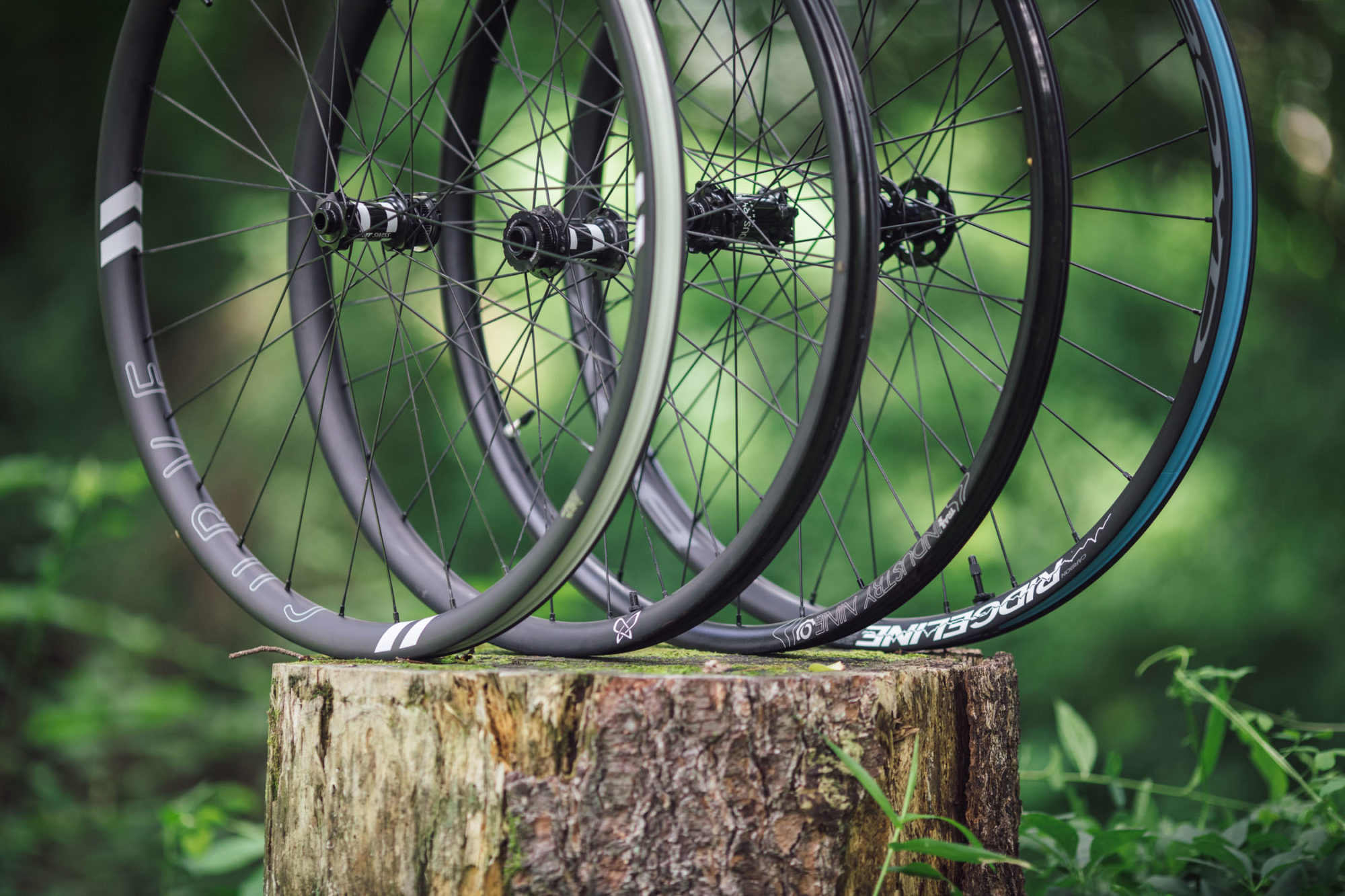
Four Wide “Gravel” Wheels that Measure Up
After a rather exhaustive search, I came up with four wheelsets that have the right measurements, hubs, and spoke counts. There are certainly more in the mountain bike wheel side of the market and semi-custom builders (which we dig more into below), but these really stand out:
Thesis Ultra-Wide Carbon 650B wheels
Carbon Rims (27.4mm IW)
DT350 hubs / 28-spoke, J-bend
$1299 / 1460g (wheelset) / Manufacturer’s Details

After a lot of research, I decided to outfit my Gorilla Monsoon build with Thesis’ Ultra-Wide Carbon wheelset. I’ve since put a fair amount of miles on them, both bikepacking and just riding. For a 650b/27.5” rig, you’d be hard pressed to find a better value for carbon rims with a superior set of specs (on paper).
Thesis is a relatively new company, but I was impressed after speaking with co-founder and CEO, Randall Jacobs. Among other experience, Randall’s work history includes product/marketing development for Specialized (including on the Diverge). He’s also a fluent Mandarin speaker and has a wealth of experience in Asia supply chain and manufacturing relationships. I was convinced when he explained how Thesis put together a magical combination of product design and best-in-class manufacturing for these wheels, as well as their OB-1 gravel bike.
The Thesis Ultra-Wide Carbon 650B wheelset has a pretty unique combination of features. First and foremost, the rims feature a perfectly wide 27.4mm IW optimized for 47-61mm (2.4”) rubber. I’d say that width is even suitable for 45mm tires and absolutely ideal for XC/semi-slick/dirt-touring tires in the 2.0-2.25” range. Not to mention, they are nicely priced when compared to most other carbon wheelsets.
For increased durability and resilience against impacts, Thesis gave them a hookless bead design, 3mm spoke hole offset, and a reinforced nipple seat. In addition, while these rims feature a typical XC-optimized Toray 800/700 carbon layup—the same “light but tough” carbon fiber blend used by many rim and frame makers under a variety of made-up names and acronyms—Thesis also employs a unique step within their layup process using graphene-reinforced resin (~1% graphene per mass of resin). Thesis claims this adds a 20% improvement in toughness at the same 345g weight. Last, but certainly not least, Thesis designed these wheels to have just one spoke length, making it easy to carry spares. And Thesis includes spares as well.
The only con I have with these wheels is that they have centerlock rotor hubs—I suppose this is more about personal preference and what I’m used to; there’s not much of an argument against centerlock. In use I’ve been very pleased with these wheels thus far. DT Swiss 350 hubs are an industry standard for reliability and I like that they’re quiet on this type of bike. They are also field serviceable if you carry an extra ratchet.
As far as the wheel build, I would have balked at running a 28-spoke wheelset on a big bikepacking trip a few years ago, but given my propensity for bigger tires, as well as the fact that Thesis’ wheels are built by hand in Taiwan and machine checked; I’m pretty confident riding them. So far, the spoke tensions are the same as the day I got them and I’ve had zero issues after several loaded bikepacking trips and a lot of gravel and two-track riding, as well as quite a few rowdy, technical singletrack rides. I’ll report back down the road, but so far so good.
Curve Dirt Hoops
Carbon Rims (25mm IW (or 30mm))
DT350 Hubs / 28-spoke, straight pull
$2,198 AUD (about $1,540 USD) / Manufacturer’s Details
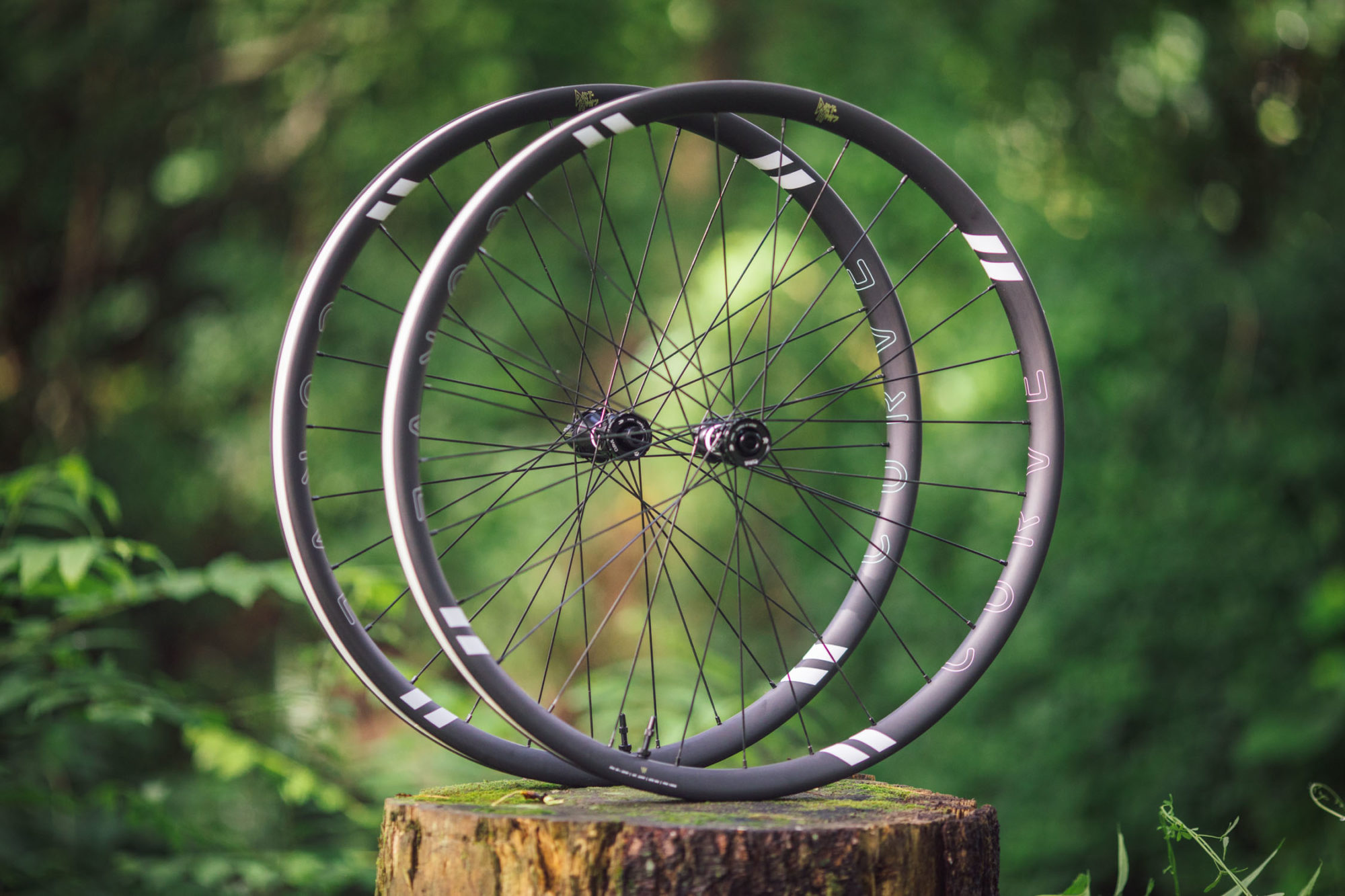
On paper, and in person, there’s a lot to like about Curve’s new Dirt Hoops. It was quite refreshing to see a wheelset marketed to all “off-road pursuits,” instead of a particular segment. As Curve calls it, these wheels are for “MTB, Gravel, Off-Road Touring Adventures, Mega Expeditions, Bike Packing, Basket Packing, Beard Packing – Whatever spins your wheels.” And they pretty much are configurable for each of those exploits. Pick between 29 Wide 35, which are 29er hoops with a 25mm IW, or 29 Wider 40, with a 30mm IW. They also offer the Wide 35 version in 27.5.
From there you can choose DT350 or DT240 hubs with a 12 x 100, 15 x 100, or 15 x 110mm thru-axle up front, and 12 x 142 or 15 x 148mm rear with your choice of driver. In addition, Curve sends an extra pair of spokes.
Dirt Hoops are built with 28 Sapim CX-Ray Aero Bladed, straight pull spokes, which thread directly into hub flanges, a system that’s touted to be stronger than a J-bend spoke interface. The Dirt Hoops also improve upon Curve’s older rims with larger hookless beads—a chunky 5mm foundation. In addition, the new rims have Mo-Spo Tech, molded, reinforced spoke holes that reduce the bulk of unnecessary material and result in a lighter rim, with no compromise on strength. First impressions of these wheels are great. Expect a full review down the road.
Boyd Ridgeline
Carbon Rims (26mm IW)
Boyd Tripel hubs / 28/32-spoke (F/R), J-bend
$1,650 / 1736g (claimed for 29″) / Manufacturer’s details

Boyd Cycling is another small company you may not have heard of. There were three things that intrigued me about Boyd’s latest Ridgeline wheels. First, they use a 28-spoke count up front, and a 32-spoke rear. This is a great way to maintain a lower weight and add extra strength to the rear wheel, which usually takes more of a beating. Second, Boyd’s new Tripel hub has a high engagement pawl/drive ring system (3.5-degrees), as well as some interesting features to ensure durability and avoid early bearing wear. These include a new stepped axle, which has a thicker drive-side shell to handle torque, and six three-pronged pawls that all engage simultaneously (18-points total). Third, Boyd Cycling has a rather unique wheel building process, all done in their HQ in Greenville, South Carolina. They have a machine that threads and starts the wheel building process. However, the spokes aren’t tensioned or tightened by machine. Instead, their team of wheelbuilders complete the process, which makes them a handbuilt wheel done efficiently. We’ll be testing this wheelset and paying Boyd a visit down the road. Stay tuned for more.
There is one drawback to the Ridgeline wheels, however. The 100mm front hub is only available for QR and 15mm thru; there are no 12mm thru-axle end caps currently available. However, while many 15mm hubs have an outer axle cap diameter of 20-21mm, which doesn’t fit on many 12mm thru-axle specific gravel forks that have a dropout pocket diameter of 19mm, the Tripel front hub 15mm end cap has a 19mm outer diameter. So, all you’d need is a 15mm > 12mm conversion shim (see below boxout).
15mm-12mm Axle Conversion
One of the biggest hurdles to using MTB wheelsets for gravel bikes is the difference in the front thru-axle. Gravel bike forks are often designed around 12mm axles, while mountain bikes are usually 15mm. There are several hubs that have swappable end caps to get around this issue. Two of the most popular are DT Swiss DT350 and Industry Nine Hydra (or Torch):
For hubs that don’t have an endcap solution, PDXTI makes a 9.7 gram carbon fiber shim to allow a 15 x 100mm hub to be used with a 12 x 100mm thru-axle fork. That said, it’s not always as simple as that. There are compatibility issues. As PDXTI describes, “a wide range of 12mm thru-axle forks have 20mm-21mm dropout pockets that accommodate the majority of 15mm hubs. A smaller subset of 12mm thru-axle forks have 19mm dropout pockets that accommodate fewer hubs… most 15mm thru-axle hubs have an end cap outer diameter of ~20mm. This creates obvious compatibility issues with the aforementioned 12mm thru-axle forks with 19mm ID dropout pockets.” I ran into this very issue with the Kona Sutra LTD, which in fact has a 19mm dropout pocket on the fork. At any rate, double check each of these specs before relying on the PDXTI shim. Find more info over at pdxti.com and detailed compatibility notes here.
Industry Nine Trail S Hydra
Aluminum Rims (27mm IW)
I9 Hydra Hubs / 28-spoke, straight pull
$975 / 1695g (claimed for 29″) / Manufacturer’s Details
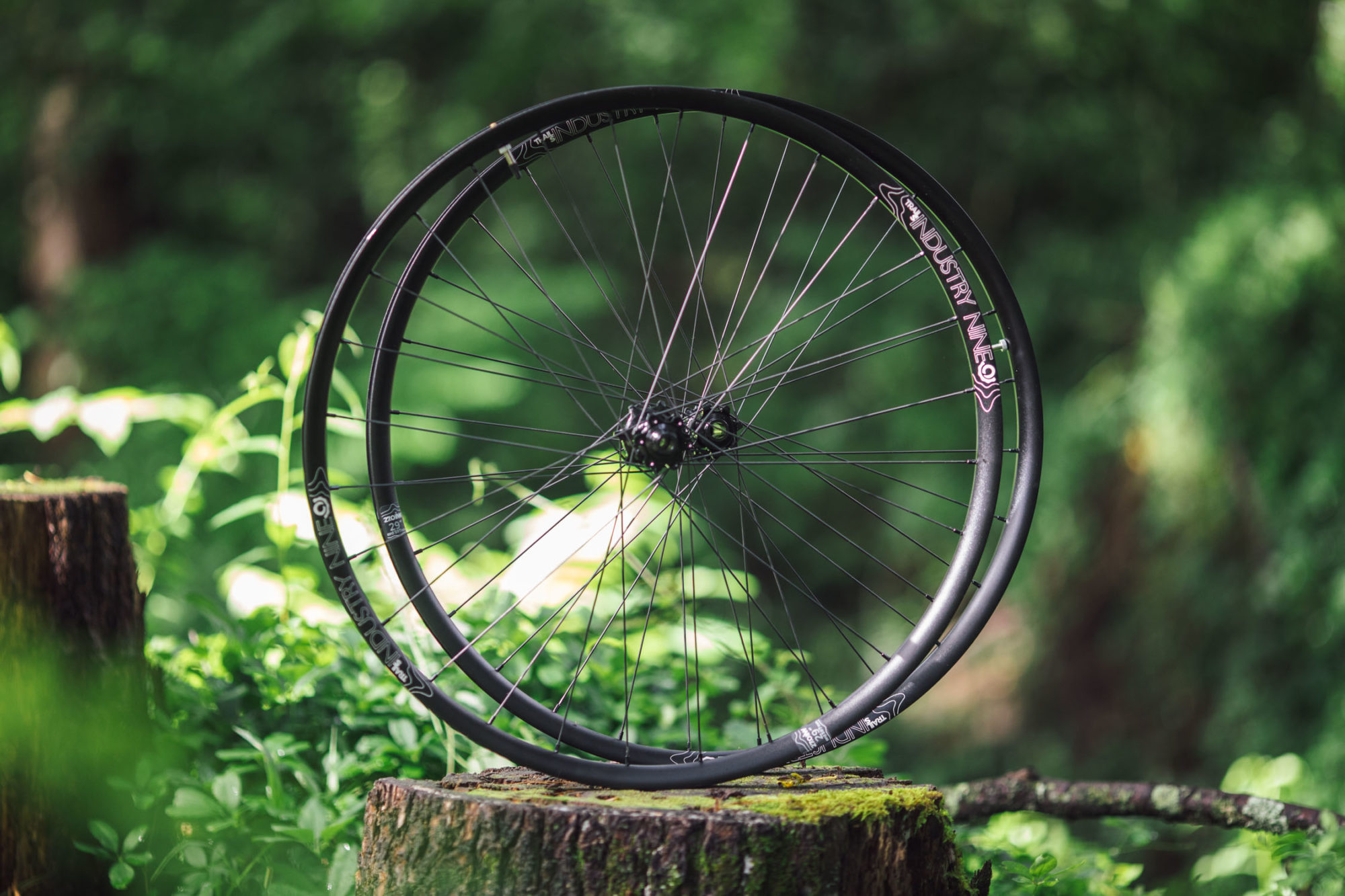
Out of the four wheelsets we picked to feature here, I9’s Trail S Hydra wheels are definitely the least expensive (as they are the only ones that have aluminum alloy rims). However, they’re also quite impressive, and fully configurable. For $975 you get a made-in-the-USA rear hub (157, 148, or 142mm) with a 12 or 15mm thru-axle, and a 100mm front hub (or 110mm) with 12 x 100mm, QR, or 15 x 100 axle specs.
Both are handbuilt and laced to the 27mm IW Trail S aluminum rim with 28 straight-pull steel spokes. The icing on the cake is I9’s latest Hydra internals in the rear hub—which I’ve been testing recently and love—that make it quieter with an even quicker engagement than the older Torch hub. Stay tuned for a more in-depth look and comparison.
This wheelset was simply loaned for a photoshoot, so we haven’t tested the Trail S Hydra. However, we’ve put thousands of miles on the similar Enduro S wheelset and have been really impressed by its durability.
MTB Wheels (With 12mm Hubs)
As with the Industry Nine Trail S wheel, it seems like the surest way to get wide gravel/bikepacking wheels with all the proper specs—as well as the promise of toughness and durability—is to buy a pair of mountain bike wheels. There is a catch, however. These days, many mountain bike wheels are specced with BOOST 148/110mm hubs. Otherwise, many that offer the older standard 12 x 142mm rear hub have a 100 x 15mm front hub; and most drop-bar bikes (and forks for these bikes) are spaced and machined for a 12 x 100mm hub. And, as mentioned above, many gravel forks are created with a 19mm dropout pocket, which won’t fit a 20-21mm outer diameter end cap (for 15mm thru-axle). Here are some MTB wheels we found that either have the option for 12 x 142/100 hubs or have a 15 x 100mm front hub that’s convertible to 12mm.
*Denotes a required conversion front end-cap to be purchased and installed.
Atomic Wide XC 33
Carbon Rims (26mm IW)
DT350 hubs* / 32-spoke, J-bend
$1249 / Manufacturer’s Details
DT Swiss Spline (1200/1501/1700/1900)
Carbon or Aluminum Rims (25mm IW)
DT240 hubs w/conversion front end-cap / 28-spoke, straight-pull
$460-2800 / Manufacturer’s Details
Hunt XC Wide MTB
Alloy Rims (25 IW), 28-spoke, J-bend
Hunt 5-degree RapidEngage (w/12mm front hub adapter cap)
$399 / Manufacturer’s Details
NOBL TR33
Carbon Rims (27mm IW), 28/32-spoke, J-bend
I9 Hydra (+ 12mm conversion front end-cap)
$1500 / Manufacturer’s Details
Velocity Blunt SS
Alloy Rims (26.6mm IW), 28/32/36-spoke, J-bend
I9 Hubs
$1185 / Manufacturer’s Details
We Are One Faction
Carbon Rims (27mm IW), 32-spoke, J-bend
I9 Hydra
$1625 / Manufacturer’s Details
“Gravel Wheels” (That Might Miss The Mark)
For reference, here are a few wheels marketed in the gravel/adventure category. While they vary in what they offer, they all didn’t fit in the parameters mentioned above.
Boyd Jocasee
650B, 24mm IW, 28-spoke, 28-spoke
$1650 / Manufacturer’s Details
The Boyd Jocassee actually looks like a pretty compelling wheelset. With a 24mm IW, it’s just about right if you’re interested running 42-47mm tires. That said, it doesn’t really “miss the mark,” but for the purpose of this article about rims fitting 47mm-2.25ish-inch tires, it’s slightly undergunned in the width department, in my opinion.
Hunt 4-Season Gravel Disc X-Wide
700c, 25mm IW, 28-spoke, 28-spoke
$389 / Manufacturer’s Details
Aside from being available only in 700c, Hunt’s latest X-wide alloy wheels don’t miss the mark at all. They’re optimized for wide tires above 35mm, “to hit the rough stuff with confidence.”
Praxis AL24
650B/700C, 24mm IW, 32-spoke
$699 / Manufacturer’s Details
The Praxis AL24 is another option that barely made it in the “miss the mark” section. Like the Jocassee, it’s fit for 42-47mm rubber. And, with 32-spokes and a DTSwiss 350 Star Ratchet hub, it looks like a pretty good value.
Bontrager Aeolus Pro
700c, 25mm IW, 24-spoke
$1,300 / Manufacturer’s Details
DT Swiss Spline GRC
650b/700c, 24mm IW, 24-spoke
$694 / Manufacturer’s Details
Easton AX
650b/700c, 24mm IW, 28-spoke
$599 / Manufacturer’s Details
Enve G27 (27mm IW / 24-spoke)
650b, 25 IW, 24-spoke
$2,550 / Manufacturer’s Details
Industry Nine GRCX TRA
700c, 24.5 IW, 24-spoke
$1,275 / Manufacturer’s Details
Industry Nine Trail270 TRA
650b, 27 IW, 24-spoke
$1,275 / Manufacturer’s Details
Mavic Allroad
650b 26mm IW, 700c 23mm IW, 24-spoke
$349 / Manufacturer’s Details
Santa Cruz Reserve
650b 25mm IW / 700c 22mm IW, 24-spoke
$1,599 / Manufacturer’s Details
If you have other wide gravel wheels you’d recommend, let us know. Or, if you have experience with any of the wheels listed above, either negative or positive, please leave a comment below…
Please keep the conversation civil, constructive, and inclusive, or your comment will be removed.







